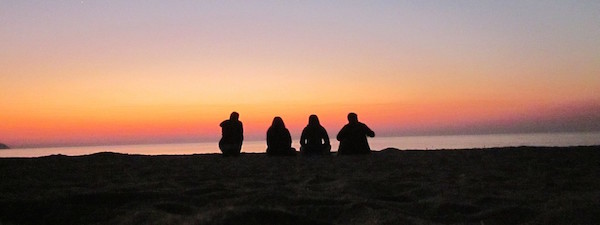
Tour buses packed with retirees. Cruise ships rife with Caucasian 45-and-up divorcees. Until recently, these were the target audiences for group travel marketing. However, with implications from social media and the changing landscape of travel planning, it seems that a much overdue evolution is here. In addition to groups organized around specific niches like hobbies (biking, history, wine) and networks (students, religious groups, book clubs), the past few years have seen growth in gender-specific, LGBT, and ethnic and culturally-focused group travel.
Yet while travel groups themselves grow and diversify, some destinations are slow to follow suit. In a recent NYT op-ed, Glenn Nelson writes about the ongoing struggle that the National Park Service faces in drawing diverse visitors (just 22% of parks visitors are minorities according to the most recent NPS survey). Nelson, who is a lover of the outdoors and the national parks, has identified a part of the solution with his website TrailPosse.com, which provides content and advice to help connect people of color to the national parks.
Brands have a lot to gain by tuning in to influential sites and social groups like Trail Posse. Take Nomadness for example, an online community of avid international travelers whose 9,000 members are 80% female and 85% Black/Latino, and Travel Noire, an online publishing platform for Black travelers around the globe. When glitches caused Etihad Airways fares to plummet last year, Nomadness and Travel Noire members scooped up nearly 1,500 tickets collectively, sharing the news via hashtag #bookdatish and attracting the airline’s attention in a big way. Etihad Airways partnered with Travel Noire to provide discount codes to their followers, joining a growing list of brands like Airbnb.
As group travel continues to diversify, other online social groups and publishers like Out Traveler for the LGBT community and The Blonde Abroad, a blog that supports and informs women about solo travel, will see continued success. And if brands partner with them in the right ways, they’ll reap the rewards, too. But don’t be fooled. It’s no longer as simple as placing an ad in the bus tour directory. It’s a time investment to capture the new group travel culture. Here are three things to do before jumping in:
Research. Spend time looking up travel groups. You can even start small with local groups and meetups before setting your sights on the big leagues mentioned in this post. Find ones with responsive and active members, both on social media and within their own online networks. You will often find that the more niche the group, the more responsive the members.
Network. Reach out. Invite group leaders and influencers to try your product, visit your destination, or take one of your tours. Their recommendations will truly be influential to their groups. If you can offer a benefit or a deal to their members, they’ll be happy to share it. A lot of these groups aren’t necessarily looking for ad buys.
Sponsor. And yes, while some of them are looking for ad revenue, it’s usually in the form of sponsorship. These opportunities can span from sponsored articles and blogs to helping organize a meetup like Nomadness’ first ever #NMDN ALTERnative Travel Conference.
However your brand gets involved in the evolution, be prepared to navigate an ever-changing landscape of group travel marketing. As destinations themselves continue to diversify (hopefully), it will open doors for new ways to reach group travel communities across the globe.